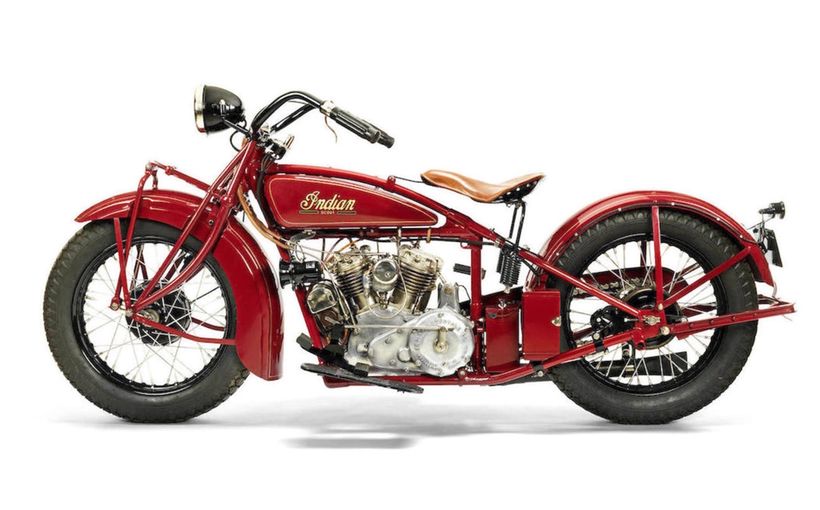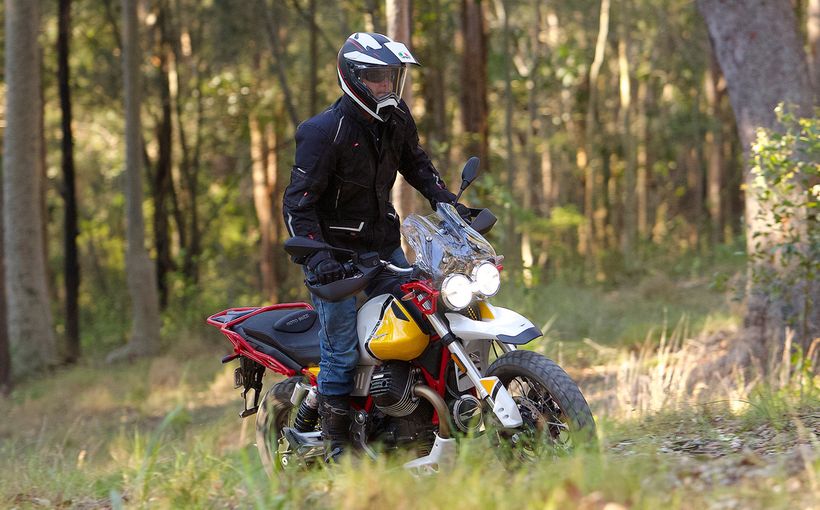2020 Indian FTR 1200 S: American Performance

BY: NIGEL PATERSON | PHOTOGRAPHY: NIGEL PATERSON
Performance motorcycles come in many shapes and sizes, from the racetrack refugees with their clip-ons and slippery fairings to naked roadburners pushing close to 200HP. Then there are Adventure bikes with crazy horsepower figures, lightweight machines, dirt bikes… but essentially nothing from America.
The US of A, the most successful capitalist economy the world’s ever seen and home to some of the oldest bike manufacturers on the planet, doesn’t build performance bikes in any numbers.
Until now.
The Indian FTR 1200S is a 120-horsepower flat-track racer-inspired ripper, designed for blasting backroads and dirt roads.

CONCEPT
Indian built the FTR750 racer to win, and it did, taking out the Flat Track Championships in 2017 and 2018 before the road-going version was released. We saw the FTR 1200 custom first, a race-bike chassis with a Scout motor, but that was really a proof of concept, a teaser to what would eventually be the production bike, the machine on these pages.
Indian developed a new motor for the FTR1200, hung it in a steel trellis chassis with USD forks and quality suspension, added tall wheels and chunky tyres with styling reminiscent of flat-track racers of old.
“Our primary focus was to ensure these motorcycles carried the same lines and form language as the FTR750 and 1200 Custom,” says Rich Christoph, Indian’s senior designer who was also instrumental in the design of the FTR750 and FTR1200 Custom. “We knew that’s what riders around the world fell in love with. I couldn’t be more proud to turn the FTR750 into a flat tracker for
the street and help launch Indian into a new era.”

PERFORMANCE
Naked bikes with retro styling and off-road capability… it’s a market niche that has been growing rapidly over the past decade or so. There are Scramblers from Ducati and Triumph to BMW’s Heritage range and XSR Yamahas, but the Indian FTR will trounce them all performance-wise: 120 horsepower at 8250rpm and 115Nm of torque at 6000rpm. There are many bikes producing more, but few in the Flat Track/Scrambler mould, if any.
The performance is produced by a 1203cc 60-degree V-twin with liquid cooling and four valves per pot. Nothing unusual there, except the Scrambler/flat-track class usually gets by with two valves and air cooling.
The pistons are big, 102mm wide, travelling 73.6mm inside the barrels. That’s massively oversquare and the reason — combined with a lightweight crankshaft — why the machine spins up close to 10,000rpm.
It’s an angry engine. Lots of heat radiates onto the rider’s legs, there’s a distinctive throb to the motor and it can be cranky to start first thing in the morning. I was shocked to discover Indian specifies 91-octane fuel for the FTR, even with it 12.5:1 compression ratio. No way in the world I’d run anything under 95 in a modern motorcycle (well, any motorcycle really, it’s cleaner fuel), but I suppose the USA with its fetish for ethanol is responsible for this.
Many modern engines don’t require warming up — fuel is a solvent and idling a modern motor at start-up can result in oil being stripped from the cylinder walls — but the FTR is cranky and unresponsive until it’s warm. Keep that in mind if you take it for a test ride; make sure it’s warm before you snick it into gear. Do so and you’ll be rewarded with a riding experience pretty unique. A big V-twin which loves to rev, a conventional six-speed gearbox with assist/slipper clutch and the power going to the back wheel via a chain and sprockets. There’s good grunt right through the rev range and with 120hp available the pace gets fast very quickly.
While there is no shortage of machines out there producing a lot more power than the FTR 1200, the useable nature of the horses and fun factor makes the
bike seriously quick in many situations.

ELECTRONICS
The FTR 1200S has three rider modes (Sport, Standard
and Rain), traction control and ABS — more modes than you’ll usually find on Scrambler-class motorcycles, but nothing unusual for a performance bike.
Importantly on this motorcycle though, the rain mode softens the throttle response, making dirt-road sliding easier, and with the chunky tyres I reckon even experienced riders might be reaching for rain mode in the wet to soften the power delivery and reduce the chances
of unplanned power slides. (Australian Road Rider didn’t get to test this; the drought meant we didn’t even see a cloud during our time with the bike.)
The electronics are all controlled through the fancy touch-screen instruments on the 1200S, or via the handlebars when you’re on the move.
A very functional and intuitive instrument panel, it’s obviously influenced by the smartphones we carry everywhere, and includes a USB port for charging said smartphone. With its conventional handlebars it was a piece of cake to mount my phone and plug it into the power and connect up the Bluetooth… but then the bike tried to control my phone! It took me a few minutes to get the instruments to display what the phone was doing (usually playing music), let me answer calls and control the phone through the instruments, but listen via my headphone-equipped Earmold earplugs.
I never did work out where it was trying to play the music, but I’m sure if I owned an FTR I’d work it out quickly. In the end this was a small glitch in my use of one of the best instrument panels I’ve used on any bike — I really, really liked it.




CHASSIS, BRAKES AND SUSPENSION
The engine is a stressed part of the chassis, hung from a tubular steel trellis frame. At the back there’s a braced tubular steel swingarm with offset cantilever shock mount, and it’s joined together with aluminium mounts. The subframe is also aluminium.
The chassis looks awesome, but the swingarm, to my eye, looked spindly — but I didn’t experience anything I could consider twisting and nor did Phil James when he rode the bike for the photoshoot, so it’s another case where looks can be deceiving.
The brakes — Brembo Monoblock M3.32 4-piston callipers gripping 320mm discs at the front, a 2-piston calliper and 265mm disc at the rear — were excellent,
with good feel and power.
I had limited time with the bike and was happy with the ride quality and handling, so I didn’t mess with the fancy adjustable suspension much, but it was good to know it could be tweaked to suit the conditions quickly.

DYNAMIC HANDLER
With 150mm of wheel travel offered by the suspension at both ends, sporty steering geometry, a shortish wheelbase, and with 43 degrees of lean angle available, the FTR 1200 S is serious about hustling through tight, bumpy and twisty roads. With its tall wheels, it doesn’t much care if the surface is sealed or not, and with a dry weight of 222kg it doesn’t feel particularly heavy either.
This is a fast “real world” bike. It’s certainly not suited to race tracks and only reasonable dirt roads, but everything between — 98 per cent of what Road
Riders ride on — is great.
Indian has got the balance between stability, flickability and comfort pretty right, building a bike you can have lots of fun on but which does not feel too smashed at the end of the day. It doesn’t make you ride at lock-up speeds and if you’re not keeping up with your mates, it’s not the bike (or they’re doing lock-up speeds).
If you’ve got a background in dirt track or off-road riding, you might want to turn off the electronics and get the back-end sliding, something the bike is perfectly happy doing. It’s not my bag though, so apart from a few experimental slides, I decided to get someone with more experience riding sideways to do so on a 222kg, $24,000 motorcycle… so that’s Phil James in the pictures with me behind the lens.
Setting the bike to rain mode — which drops the horsepower and softens the throttle response —
makes the bike easier to slide, but it’s still big, heavy and very powerful for this sort of a lark.
But it’s nice to know all the flat-track heritage isn’t just styling; the bike is capable of sliding safely if that’s what you want to do.


IS IT PRACTICAL?
In the grand scheme of things, the Indian FTR 1200 S will work for a lot of people as their only bike. The upright riding position is reasonably comfortable, it’ll filter through traffic, it can carry a pillion passenger, you could go touring on it.
However, the sit-up riding position is up in the breeze so it’s tiring, and the lumpy, aggressive nature of the engine can induce rider fatigue. There’s not a lot of room for your loved one on the back, the fuel capacity of the underseat tank is a pathetic 12 litres — so while the FTR can turn its hand to lots of things, it’s not super practical at this stuff.
If you already have an Indian touring bike in the shed and wanted something with a bit more gusto for day rides, solo blasting and city carving, the FTR might be the perfect second bike.

CONCLUSION
The FTR1200S is a racetrack-inspired machine, but unlike most road-going sportsbikes, it’s evolved from a successful flat-track racer rather than a road-racing bike. That’s a good thing, because not only does it give motorcyclists another option, it’s actually more practical than so many other sportsbikes available today that are a bit crazy to ride away from closed circuits like Phillip Island or Sydney Motorsport Park.
The Indian FTR shows you don’t need 150+ horsepower to have fun.









